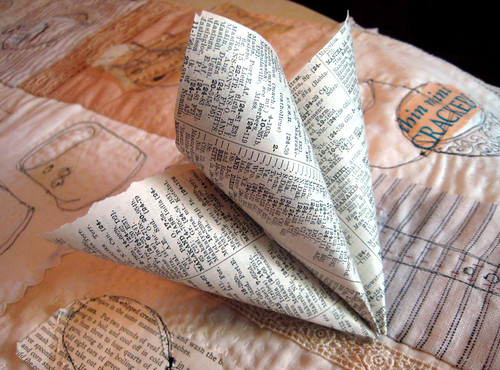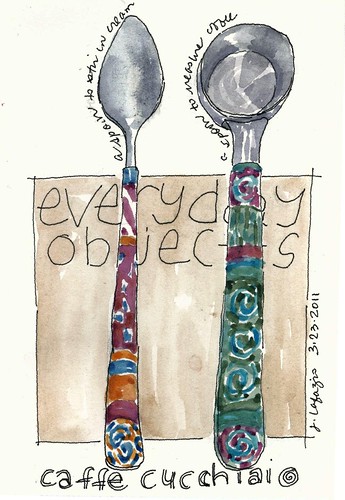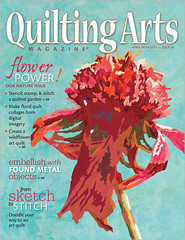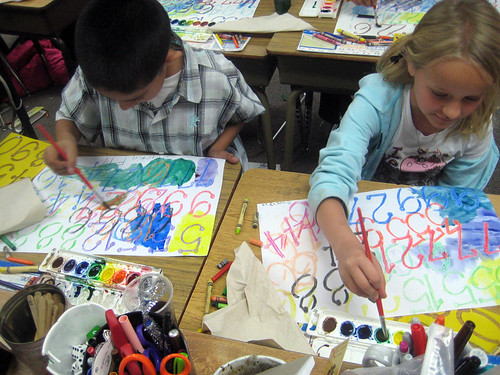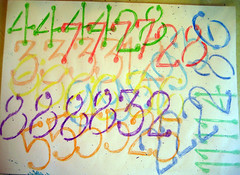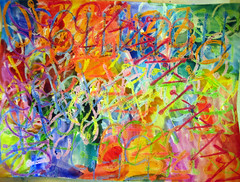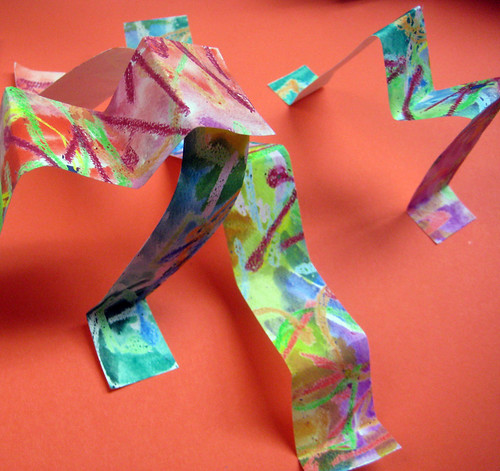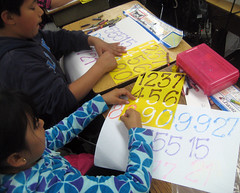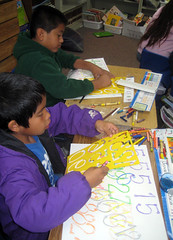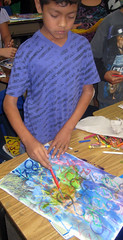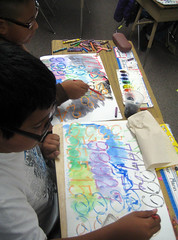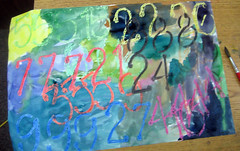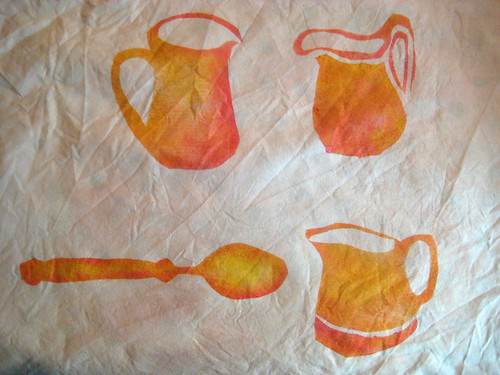 I love cutting my own stencils from freezer paper. And why not carry on with my recent theme of my sketchbook pages of everyday objects. I started this as a background, or sampler, to show you how it's done.
I love cutting my own stencils from freezer paper. And why not carry on with my recent theme of my sketchbook pages of everyday objects. I started this as a background, or sampler, to show you how it's done.

 I printed out my sketchbook images on to freezer paper (I used my laser printer and printed in b&w, but it doesn't make any difference. Inkjet is fine.)
Using an x-acto knife, I cut away the part that would be filled with color. (I've laid the stencil on a colored paper, so you can see the part I've cut away.)
I printed out my sketchbook images on to freezer paper (I used my laser printer and printed in b&w, but it doesn't make any difference. Inkjet is fine.)
Using an x-acto knife, I cut away the part that would be filled with color. (I've laid the stencil on a colored paper, so you can see the part I've cut away.)

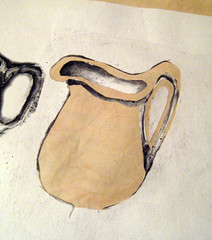 Iron the freezer paper to fabric. (I'm using my tea-stained cotton). Notice how I added the cut out pieces of freezer paper to get the interior and handle.
Iron the freezer paper to fabric. (I'm using my tea-stained cotton). Notice how I added the cut out pieces of freezer paper to get the interior and handle.
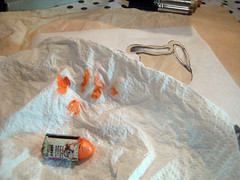
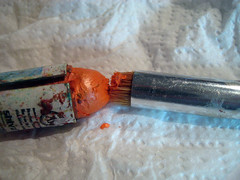 I'm using Shiva Paintstiks (oil paint in a crayon form). I prefer the
I'm using Shiva Paintstiks (oil paint in a crayon form). I prefer the
iridescent colors. You clean off the tip, to remove the skin that has formed, and then use a stencil brush.
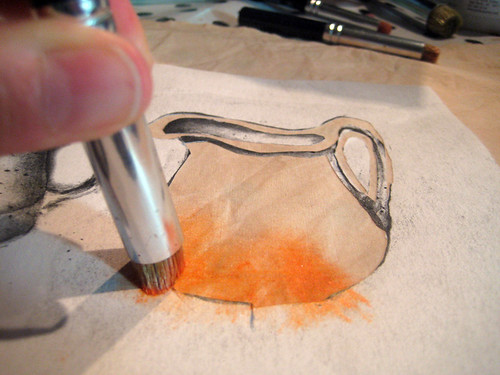
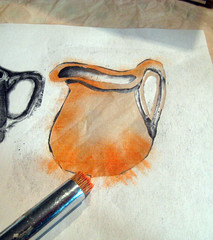
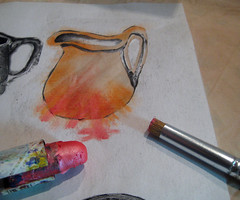
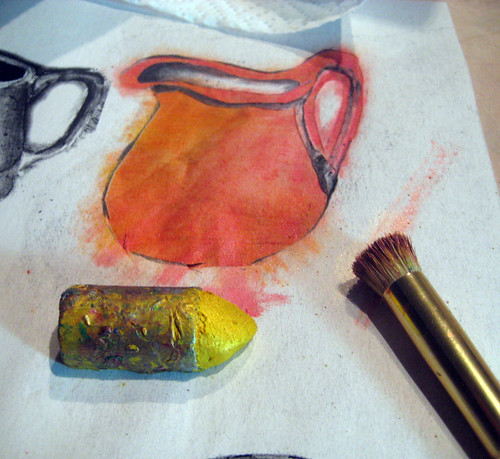 The key to this is blending different colors.
The key to this is blending different colors.
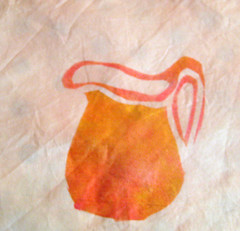
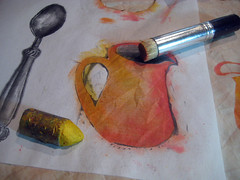 Remove the freezer paper.
I'm using these images as a background, so on to the next. Cut out with an Xacto knife, iron on the freezer paper, careful not to touch the previous 'wet' image. Add color with a stencil brush.
Remove the freezer paper.
I'm using these images as a background, so on to the next. Cut out with an Xacto knife, iron on the freezer paper, careful not to touch the previous 'wet' image. Add color with a stencil brush.
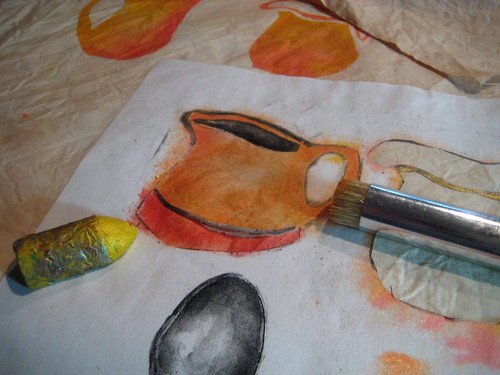
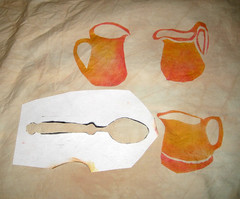
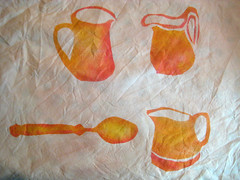
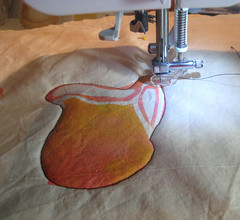 (Note: let paintstiks dry overnight, and iron/heat set.) I added batting to the back of the fabric, and began a little machine free motion stitching in black thread to mimic the drawn pen line from my sketchbooks.
(Note: let paintstiks dry overnight, and iron/heat set.) I added batting to the back of the fabric, and began a little machine free motion stitching in black thread to mimic the drawn pen line from my sketchbooks.
 I stitched around the spoon, and thought, okay, what next? A focal point of some kind would be nice.
Warning, this is where you may be come confused. It's not you.
I finished off the edges of the little quilt, and did a little hand sewing, thinking about what would come next. I decided on the clock image. Printed it out on deli wrap, pinned it on the back, and stitched from the back. (here's my short tutorial on this process) THEN, I added two layers of black tulle to the front, and stitched around the clock again from the front.
I stitched around the spoon, and thought, okay, what next? A focal point of some kind would be nice.
Warning, this is where you may be come confused. It's not you.
I finished off the edges of the little quilt, and did a little hand sewing, thinking about what would come next. I decided on the clock image. Printed it out on deli wrap, pinned it on the back, and stitched from the back. (here's my short tutorial on this process) THEN, I added two layers of black tulle to the front, and stitched around the clock again from the front.
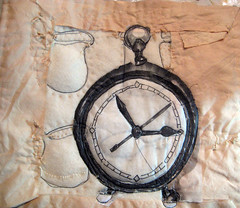
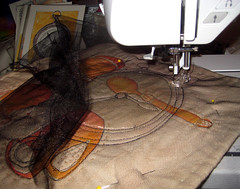 Clock on the back of the quilt.
Clock on the back of the quilt.
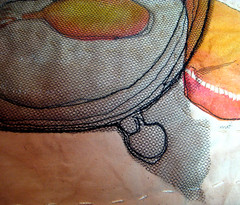
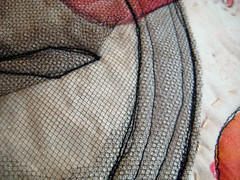 I cut away the tulle, around the clock silhouette, and cut away one layer of tulle from the interior of the clock.
It still needed more, so I printed out my spoons and used one for the image. Pinning the image on the back and sewing from the back.
I cut away the tulle, around the clock silhouette, and cut away one layer of tulle from the interior of the clock.
It still needed more, so I printed out my spoons and used one for the image. Pinning the image on the back and sewing from the back.

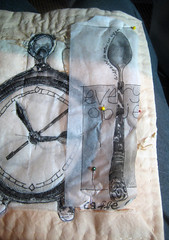
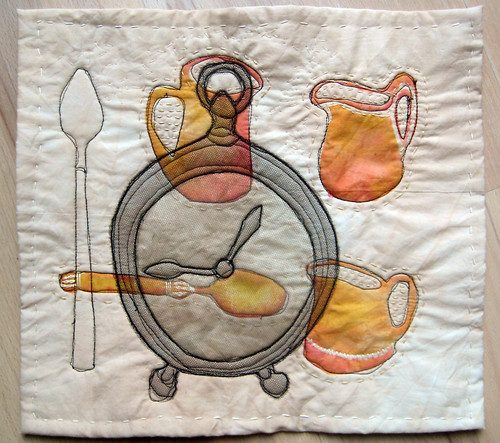
.
So, here it is. It's not done, it still needs something. I'm thinking I'll add some text from an old book..I'll let you know.
Check out my teaching schedule here.


